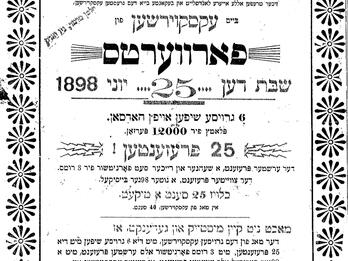The Samson Game
Who among you, my little brothers, my dear children, has not played this game? We all know it, you might think so in your hearts, we do not need to talk about it. But I will lay this game out before you in different forms and in alternative ways.
The Standard Game
Those who want to play the Samson game should choose a flat and smooth area—so that the blindfolded player does not trip up as he runs after his open-eyed friends—such as a large room or an open, outside area. If people play in a room, the furniture should face the side, so as not to disrupt the game. If they play in a yard, a boundary should be set beyond which one is not allowed to pass.
By lottery or by rhymed count, the chosen player will be selected; blindfold him so that he cannot see at all. He should then spin around several times, on one leg, as on an axis, so he forgets the layout of the space and loses track of where his friends were standing. While he does this, his friends should scatter and run in all directions. The blindfolded player should chase after them and attempt to catch one of them by hand. As he does so, his ears will assist him: Where he hears the sound of a step or of laughter—there he will run. If he approaches the boundary or the wall, his friends are to call out “Fire!” so that he knows he needs to turn. His friends are permitted to annoy him, to touch him and then run away, to sit, to crouch, to fall down, to kneel, but they may not push him or pull him by his clothes.
The larger the room, the more people play—the faster the blindfolded player goes—and the more enjoyable the game is. For a speedy (blindfolded) player may stand in one place, listening carefully for the sound of someone’s voice or step. Suddenly, he turns sideways, opening his arms, feeling confident and certain that he is about to pounce on one of his friends and grab his arm. He approaches the place, hoping to embrace his friend in his arms. But the open-eyed player is himself also very quick—he hurries and turns aside, and a great laughter breaks out among all of the players. The blindfolded player gets up and braces himself to chase his friends who are teasing him once again. This is how the game goes, until the blindfolded player manages to catch one of the others. Then a loud voice is heard from all, as they open the eyes of the catcher and close the eyes of the one who has been caught, making him the blindfolded player. They then go on and play again as before, teasing him, running quickly away from him, until he succeeds in catching someone else.
The Game in Greece
In Greece, the game ends differently:
Directing and Finding. The catcher, that is, the blindfolded player, must say the name of the person he has caught. He may feel about his clothes, and his hand, if he has caught him. If he correctly states the person’s name, his blindfold is untied from his eyes, and he switches places with the other person. But if he does not, then he continues to be the blindfolded player, chasing after his friends until he catches one of the players and correctly states his name.
Guessing in a Circle with a Stick
The open-eyed players stand in a circle, holding hands with one another. Singing joyfully, they revolve around the blindfolded player, who stands inside the circle. The blindfolded player has a stick in his hand. When he hits the ground with the stick, the players must stand and stop singing. The blindfolded player then raises the stick and points it at one of the people standing in the circle around him. The player to whom the stick is pointed asks: “What?” The blindfolded player must then try to determine his name, based on the player’s voice, which he should repeat several times. When he correctly guesses the name, he puts the stick down on the ground in front of him, removes his blindfold, and changes places with the named player. A player may alter his voice so that one who hears him will not recognize it.
Credits
Published in: The Posen Library of Jewish Culture and Civilization, vol. 7.




